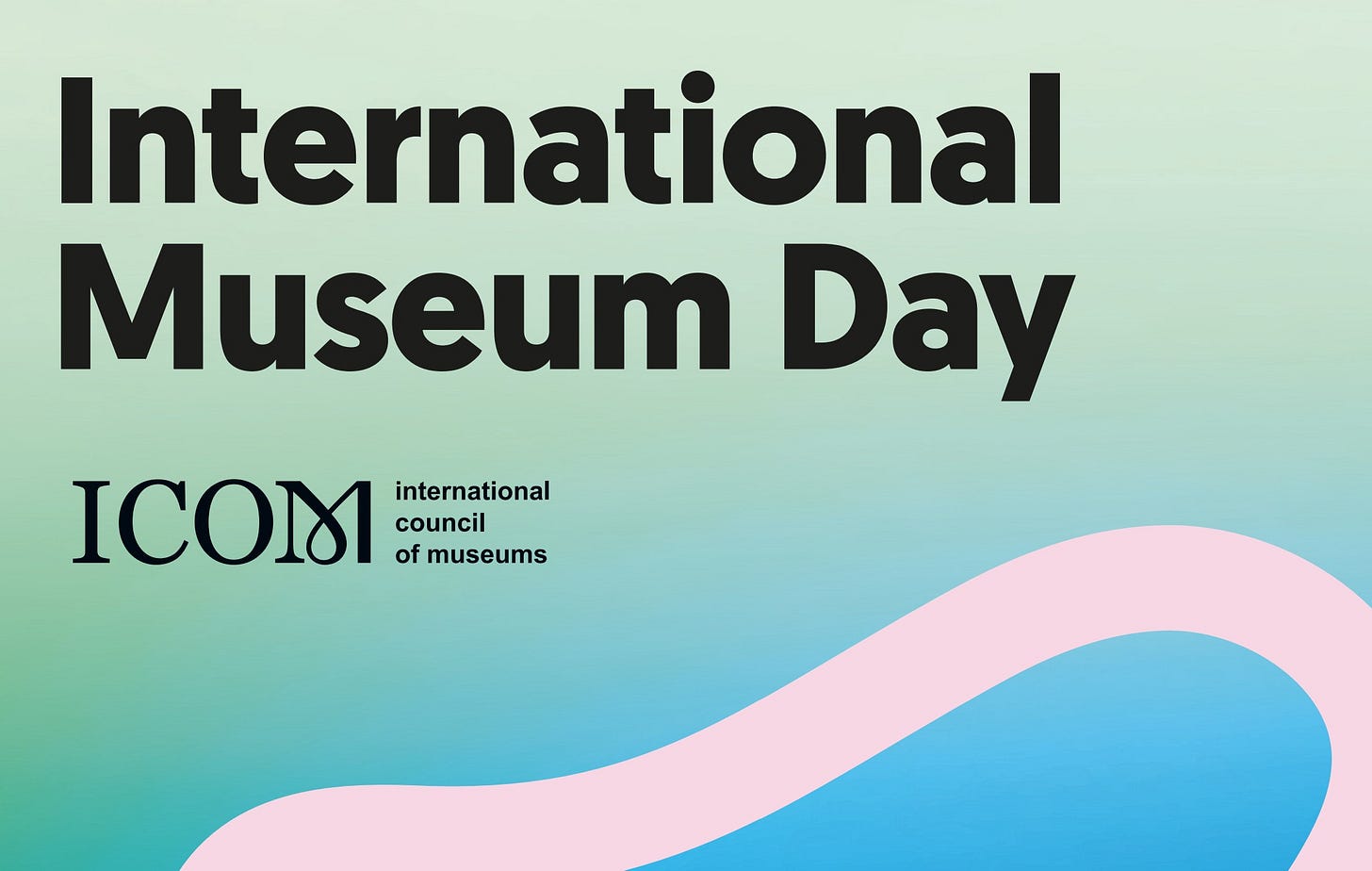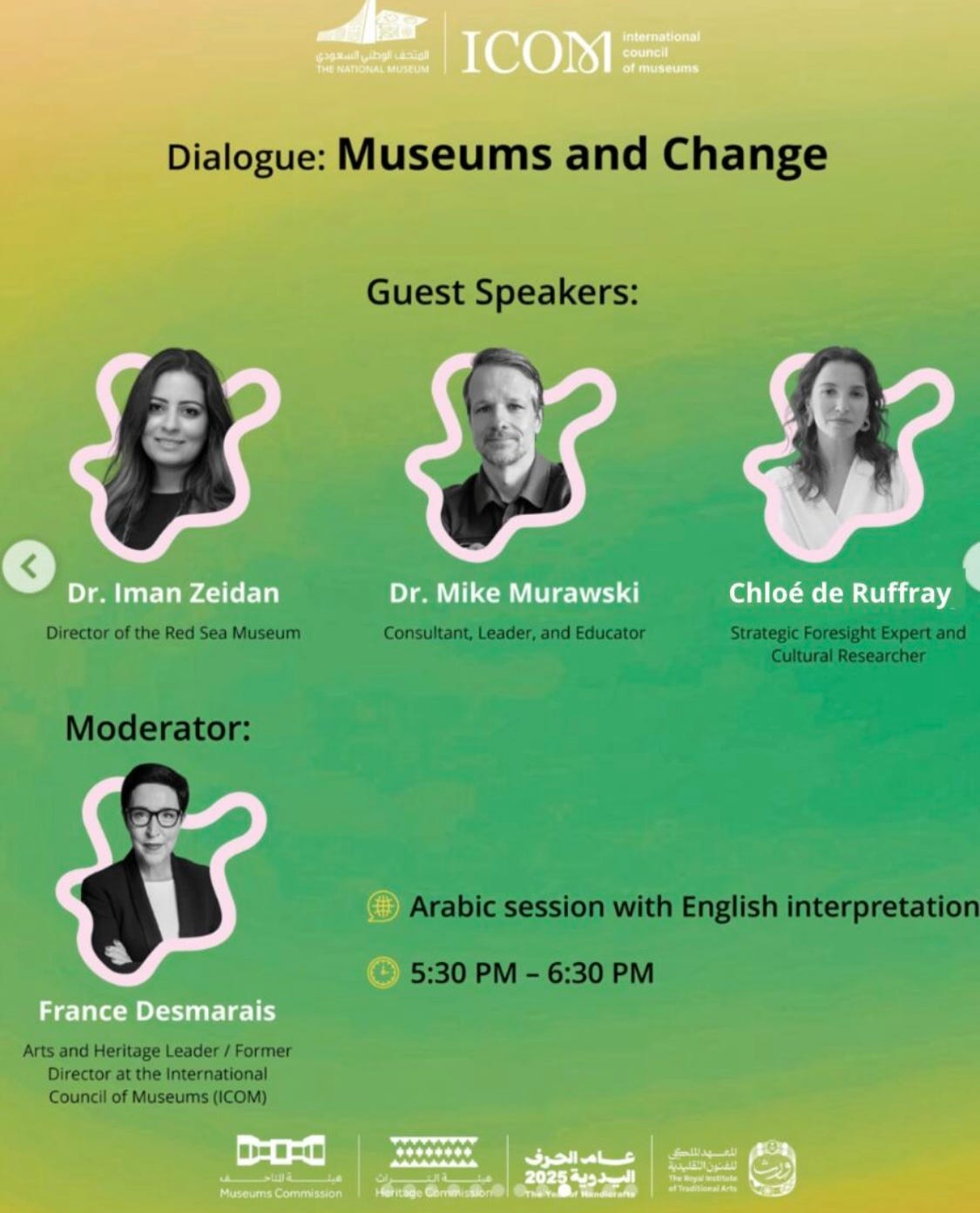Museums as Infrastructure for Community Resilience
Celebrating International Museum Day by being part of the program at the National Museum of Saudi Arabia
Hey Changemakers,
This week, I’m honored to be speaking at the National Museum of Saudi Arabia as part of their three-day celebration of ICOM’s International Museum Day 2025, centered on the theme “The Future of Museums in Rapidly Changing Communities.”
Click here for ICOM’s Communication Kit for the global advocacy event.
The event brings together museum professionals, cultural leaders, and changemakers from around the world to explore how museums can be drivers of economic vitality, platforms for innovation, and anchors of community resilience. My panel, “Museums and Change,” is moderated by France Desmarais (former Director of ICOM), and I’m joined by two inspiring co-panelists: Iman Zeidan, Director of the Red Sea Museum, and Chloé de Ruffray, a strategic foresight expert and cultural researcher. I was honored to be invited to speak in person, but unfortunately I can only connect virtually to the session.
In my opening remarks, I focused on an idea that continues to guide my work and writing: the belief that museums must act as vital infrastructure for community resilience—not only preserving the past, but helping communities navigate the present and shape bold, inclusive futures.
I send my sincerest gratitude to the program’s organizer at the National Museum of Saudi Arabia, including Hussah Alyahya, Program Coordinator, and Omaima Almazroui, Senior Specialist. Their entire team has been so generous and supportive.
I’m sharing the full text of my brief remarks below.
Opening Statement: “Museums as Infrastructure for Community Resilience”
Thank you for the invitation to be here—it’s an honor to join this conversation, especially during a moment when so many communities around the world are navigating deep change, uncertainty, and possibility.
Across my work over the past 20 years in museum education, nonprofit leadership, and community development, I’ve been drawn to this central question: How can museums become more human-centered, more relational, and more courageous in responding to the world as it is—and as it could be?
I want to speak briefly about museums not just as stewards of heritage, but as part of the infrastructure of community resilience—places that help people make meaning, build trust, imagine new possibilities, and take collective action. That work is not abstract—it’s urgent.
We are living in a time of overlapping change—climate disruption, migration, deepening inequality, and social fragmentation. In this context, museums cannot afford to be passive or purely reflective institutions. We need to see them as active civic players—as places where people gather, build trust, share knowledge, and imagine new futures together.
This means shifting how we think about the purpose of museums: from containers of culture to platforms of possibility—from temples of preservation to hubs of belonging, care, and co-creation. It’s about relationships. It’s about shifting from programs for to partnerships with. It’s about asking: Who decides what stories are told here? Who benefits from this space? Who feels welcome—and who doesn’t?
We’re already seeing powerful examples of this globally.
In Washington, D.C., the Smithsonian Anacostia Community Museum is redefining the role of a national institution. Its Growing Community initiative transforms vacant lots into community gardens—spaces where residents address food insecurity, reconnect with land, and build collective capacity. Their Center for Community and Environment supports local responses to climate resilience and neighborhood survival, showing how cultural institutions can be grounded in lived experience and community-defined needs.
In London, the Migration Museum and the Museum of Homelessness are both reshaping how museums engage with urgent social realities. These are not neutral spaces—they are museums that take a stand, create room for hard conversations, and operate in deep relationship with the people and movements shaping their cities. The Migration Museum’s Taking Care of Business project highlights the everyday contributions of migrant entrepreneurs across the UK, actively supporting community and economic growth – while the Museum of Homelessness offers direct services and advocates for policies that support housing justice.
And in Minneapolis, the Minnesota African American Heritage Museum and Gallery provides an anchoring space in a city where racial justice struggles remain at the forefront. Their exhibitions and programs not only uplift Black history—they serve as a vital space for healing, organizing, and cultural affirmation in the wake of systemic violence and generational harm.
All of these institutions model what it looks like when museums step into their role as civic infrastructure—supporting health, education, food security, environmental justice, and social connection. And they do this by centering community leadership, lived experience, and care as core parts of museum practice.
This kind of work aligns directly with several Sustainable Development Goals:
Goal 11 calls us to make cities and human settlements inclusive, safe, resilient, and sustainable—and museums can play a central role in that civic ecosystem.
Goal 9 reminds us that innovation must serve infrastructure, not just industry—museums can be innovators in social resilience, not just digital engagement.
And Goal 8 challenges us to ensure decent work and equitable growth, which means museums must also examine their own labor practices and internal cultures as part of their social impact.
So what does meaningful change look like for museums in rapidly changing communities? I believe it starts with this idea: Museums must become part of the connective tissue that helps communities survive and thrive.
That means building trust, sharing power, and designing from a place of deep empathy and long-term relationship.
If we can commit to that kind of change, then museums won’t just be places that preserve the past. They’ll be places that nurture the future—resilient, equitable, and created together.
Thank you.






